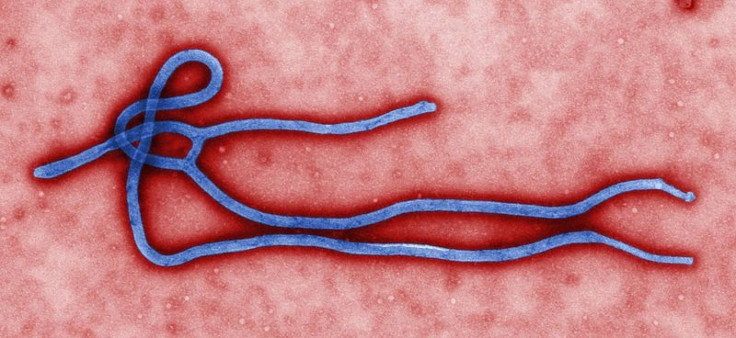Deadly Ebola, Central Africa's Recurring Menace, Hits Uganda Again

An outbreak of Ebola in Uganda has killed three people so far, and health officials are moving quickly to treat and quarantine any others who may be infected with the deadly disease.
The outbreak occurred in the Luwero district, about 40 miles outside the capital city of Kampala. Two of the dead were members of the same family, and one of them had worked as a motorcycle taxi driver.
Up to 15 more people are being monitored in isolation, according to the Associated Press. These early efforts to control transmission are encouraging, but – as with every outbreak – many Ugandas are terrified that this one could spread beyond the capacity of health care workers to contain it.
Ebola is a highly lethal, highly contagious viral disease with no cure and no vaccine. Researchers are currently testing some promising vaccines on animals, but for now the best way for humans to prevent infection is to avoid contact with those who are exhibiting Ebola symptoms, which include vomiting, headache, fever and hemorrhaging.
Ebola is spread via contact with an infected person’s secretions, which could be anything from waste to saliva to sweat. Even shaking hands can result in contagion, which is why early isolation of infected patients is so important.
Although it is possible to recover from Ebola, survival becomes increasingly unlikely as the infection progresses. After an incubation period and a typically sudden onset of symptoms, death can follow within a matter of days or weeks.
The mortality rate for Ebola depends on which form the virus takes. There are currently five known strains, each named for the location of its first recorded outbreak – the first of which was in Zaire, which is now called the Democratic Republic of the Congo.
It was 1976 when the strain called Ebola-Zaire was first identified; 280 people died. That same year, the Ebola-Sudan strain was discovered. It killed 151. (Both strains have recurred numerous times since then.) Ebola-Bundibugyo, named for a town in Uganda, killed 42 people in 2007 but has not been recorded since.
Ebola-Ivory Coast was discovered in 1997 by scientists; one researcher fell ill, but survived. The latest strain known, which infected laboratory monkeys in Virginia, was dubbed Ebola-Reston; it has so far killed no humans.
Officials told the Associated Press that the strain responsible for Uganda’s current outbreak is Ebola-Sudan, which has a fatality rate of about 53 percent, according to records of patient fatalities compiled by the U.S. Center for Disease Control and Prevention.
Ebola has never caused a human infection outside of Africa. Outbreaks have been concentrated in equatorial countries – Gabon, the DRC and Uganda – as well as Sudan.
Though it is entirely conceivable that an Ebola infection could travel with an infected human via airplane (especially since symptoms are undetectable during the initial incubation period), that hasn’t happened after more than two decades of recurring outbreaks in Central Africa, and there is nothing to indicate that a cross-continental infection will occur anytime soon.
The problem, then, remains an African one. This is especially tragic because countries like Uganda and DRC lack the infrastructure to address outbreaks efficiently, so Ebola can do more damage here than it would in most developed countries.
Many infections in Uganda, DRC, Gabon and Sudan were spread via nosocomial transmission, meaning that healthcare workers catch Ebola from a patient. Better facilities, including the appropriate tools, masks and gloves, could greatly cut down on transmission rates in Central Africa.
Another problem these equatorial countries face is their wildlife. Central Africa is full of lush forests and boasts a rich biodiversity. Animals – not humans – act as Ebola’s reservoirs, meaning that certain species can carry the virus long enough without falling ill, enabling it to spread more easily.
Fruit bats are a likely culprit, since the ones native to that region are not always sickened by Ebola. Scientists have theorized that these little creatures pass the disease on to monkeys.
And when people hunt or otherwise come in contact with infected monkeys, another human outbreak erupts.
So for Central Africa, spreading awareness and improving health care practices will be the best way to save lives until a vaccine can be made available. The good news is that medical responses to the disease have progressed; health workers in Uganda proved this on Thursday by moving quickly to isolate potentially infected patients.
The bad news is that infections are becoming more frequent. In the past, outbreaks were recorded between intervals of years. But this current outbreak is close on the heels of another; Uganda just recovered from a July outbreak that killed 16. And across the border in the DRC, an outbreak killed 36 in September and October.
But health officials have explained that this apparent frequency could simply be a result of more accurate diagnoses.
On Thursday, Ugandan Health Minister Christine Ondoa tried to calm people’s fears by assuring that the disease, while very deadly, is also “easily preventable.”
She urged all Ugandans to avoid unnecessary physical contact, refrain from burying the bodies of people killed by Ebola, avoid hunting or consuming monkeys, and disinfect the clothes and bedding of infected patients.
"The Ministry of Health once again calls upon the public to stay calm as all possible measures are being undertaken to control the situation," she added, according to the Associated Press.
© Copyright IBTimes 2024. All rights reserved.






















